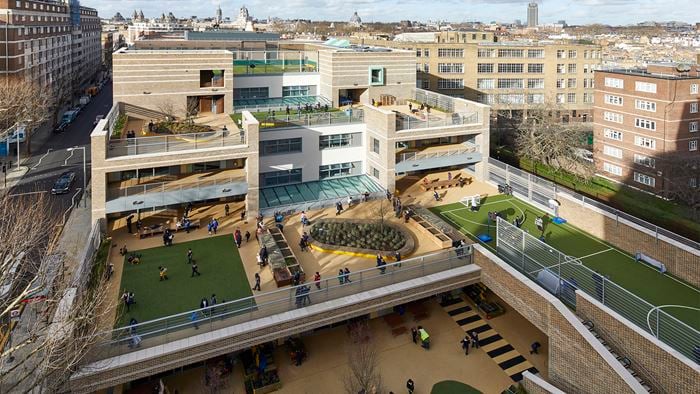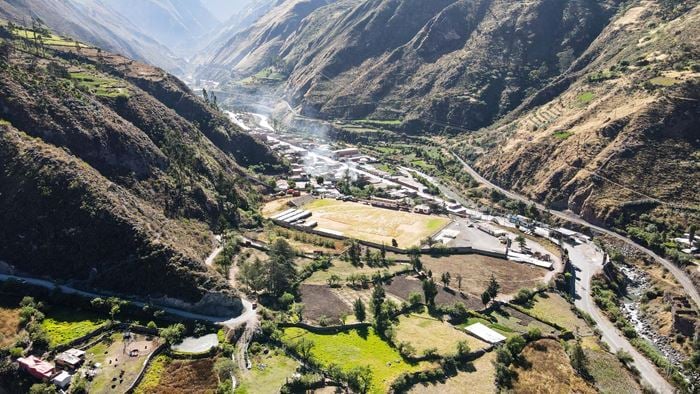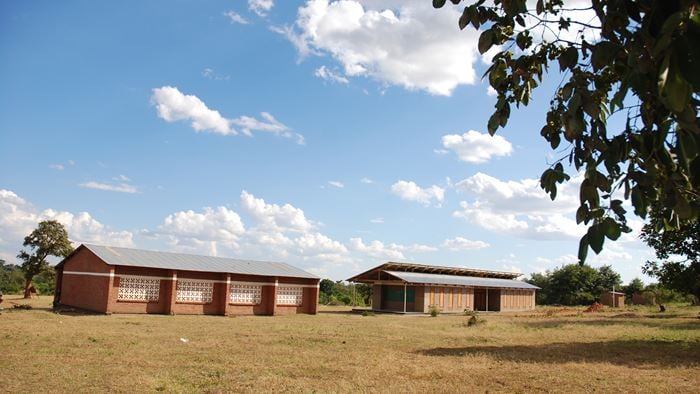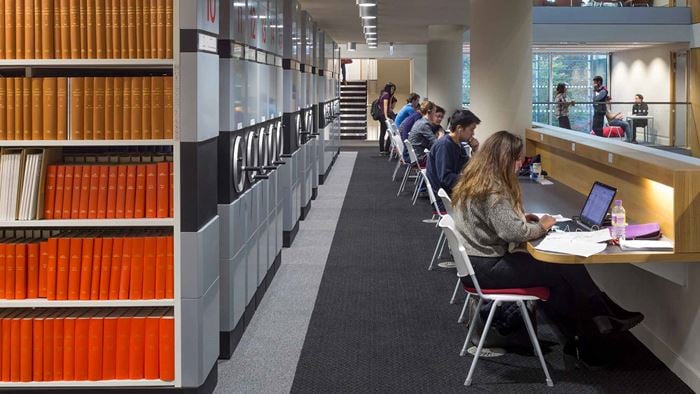Climate change is already impacting Londoners. Children, especially very young children and those with special educational needs and pre-existing health conditions, are particularly vulnerable to the impacts of climate change. In the face of rising temperatures, extreme storms and flash flooding, schools must enhance their resilience to protect the wellbeing of students and staff. How can this be achieved by schools within an already challenging financial landscape, with constrained resources, competing priorities, ageing buildings, and skills barriers?
In 2020, the Greater London Authority (GLA) commissioned Arup to develop guidance for London schools on the measures they can take to adapt to climate change. We researched and engaged with the London school and early years community, developing an adaptation planning approach which included physical changes, operational and behavioural measures and funding opportunities. Read the final guidance here.
In 2023, we took this one step further and developed tailored climate adaptation plans (CAPs) for 60 schools as part of the GLA’s Climate Resilient Schools (CRS) programme. Within our role, we identified the most significant climate change impacts and risks facing each school – covering overheating, flooding and water scarcity. Based on this understanding, we then recommended feasible climate change adaptation and resilience measures to address them. The objective was to help schools understand how they could use their buildings and grounds to protect themselves from climate change impacts and risks, and contribute to a thriving, resilient and connected school community.
Project Summary
93% of surveyed schools reported overheating as an issue
60climate adaptation plans created
41physical climate adaptation and resilience measures identified for schools
One size does not fit all
In 2020, our main objective was to produce guidance and recommendations for schools that would make the most difference in their unique circumstances while retaining general applicability for all London schools. Our approach was to provide a starting point for schools when undertaking a climate risk assessment to help them understand their particular vulnerabilities and identify the most appropriate options to address them.
Drawing on inputs from specialists across Arup’s climate change and sustainability, water, building engineering, landscape design, masterplanning and building physics teams, we identified three school building typologies, and indicated the cost, space requirements, impact and wider benefits for each adaptation measure, helping schools to identify the most suitable options for their site.
“The impacts of climate change are already being felt across the UK, with London experiencing particular extremes of heat and water scarcity over recent years. Children are highly vulnerable to such extreme conditions, and existing school sites are rarely designed or operated with climate change in mind. This guidance will help school leaders to adapt their estates, to protect the health and wellbeing of school communities in the face of climate change, and to nurture a generation of future climate leaders. ” Laura Frost Associate - Energy and Climate Change, Arup

Climate adaptation plans
In 2023, we were commissioned by the GLA in partnership with the Department for Education (England) and Thames Water to take the existing 2020 guidance further and develop individual climate adaptation plans for schools across London. Within just six months, we developed climate adaptation plans for 60 schools.
The plans included a range of physical climate adaptation and resilience measures, and behavioural and operational measures, to reduce vulnerability and exposure to climate change impacts and risks.
Every CAP comprised a selection of up to 12 measures, encompassing both ‘quick win’ solutions and longer-term strategies. Additionally, we provided detailed information on the costs and maintenance requirements associated with each measure, ensuring that the schools can sustain their resilience autonomously in the future.
Alongside the CAPs we created a supporting compendium of climate change adaptation and resilience measures, containing the full range of 41 physical adaptation and resilience measures recommended in the CAPs, which is readily available for each school to access.
Download the compendium hereStrategic recommendations were also made to the Climate Resilient Schools Steering Group. If these strategic recommendations are acted upon, the 60 schools who now have CAPs will be better able to implement relevant climate change adaptation and resilience measures and therefore be more resilient to climate change impacts and risks.
A data-driven approach
Data collection was vital in the development of the plans. To ensure consistency and efficiency, we created a bespoke version of the Esri ArcGIS Field Maps app to collect geospatial data during site surveys of all schools. The app allowed our team of surveyors to easily highlight key areas of interest, such as 'hot spots' (areas of high temperatures or overheating), 'wet spots' (areas with flooding or drainage issues), and 'dry spots' (areas with visible impacts of water scarcity), which informed our recommended measures for each school.
The team of surveyors comprised early career engineers, landscape architects, environmental consultants and planners. Based on their findings, our Technical Advisory Group, comprising senior experts in climate change and sustainability, water, building engineering, landscape design, masterplanning and building physics, identified the appropriate climate change adaptation and resilience measures.
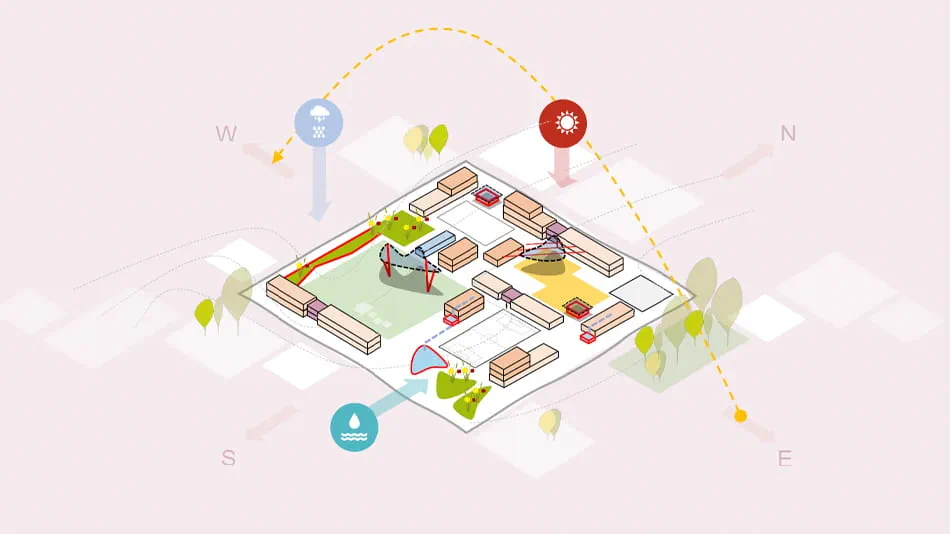
Building climate resilience in the built environment
Schools in London can utilise the content of the CAPs and the compendium immediately, while schools in other regions of England, and other nations of the UK, may need to evaluate and adjust them to suit their specific circumstances.
With ambitions for every school in England to have a ‘climate action plan’ by 2025, our work on the CAPs and the compendium for London schools could also serve as a model for nationwide implementation of climate change adaptation and resilience measures.
The approach we have developed on this project – encompassing detailed analysis and evaluation of building and landscape typologies, effective stakeholder engagement, a focus on passive design and nature-based solutions, and innovative data collection and visualisation - can also be transferred to deliver practical climate change adaptation and resilience plans for other public sector buildings and landscapes. For example, for hospitals and health centres, and for college and university campuses.
Learn more about our expertise in climate change resilience and adaptation
 ;
;



